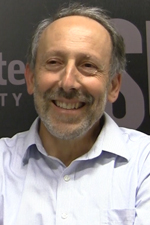Biography

John S. Selker was born in 1960 in Seattle, Washington, living there and in Tacoma until his family moved to Longview, Washington when John was in the third grade. Selker remained in Longview through his junior year of high school before, in 1977, choosing to forego his senior year in favor of beginning his higher education at Reed College. While at Reed, Selker worked as the shop supervisor for the college's Art department and found himself torn between majoring in art or physics. Having ultimately chosen the latter, Selker spent two summers as an undergraduate working at the Stanford Linear Accelerator. He also developed his first sensor, a speedometer for a bicycle, before graduating from Reed in 1981.
After graduation, Selker helped to build a house for his family and then went to Europe for nine months, hitchhiking and bicycling around the continent with his brothers. He first arrived at Oregon State University after returning from Europe in 1982. During this time he worked for the U.S. Department of Agriculture as a designer and engineer of environmental control chambers, and also built a two-directional thermogradient plate. He left Corvallis after one year, intent on traveling to developing countries to better understand the world.
After entertaining the idea of joining the Peace Corps, Selker instead opted to intern at the Aprovecho Institute in Cottage Grove, Oregon, where learned to make cook stoves and also met his wife, Laurie. In 1984, after a short stint in Silicon Valley, where he directed the development of high resolution optical computer mice at Mouse Systems Corporation, John and Laurie traveled to Kenya, where they helped to build bread ovens in collaboration with a Peace Corps volunteer.
In 1985 the Selkers were hired by UNICEF to travel to Somalia and train local craftspeople on the construction of ovens carved out of soapstone. From there they conducted more work in Kenya before moving on to Sri Lanka, where their focus returned to cook stoves. During their travels in Africa, the Selkers experienced the continent's deepest drought in a century, and it was during this time that John began to consider a career in water resources.
Selker returned to school in 1987, studying agricultural engineering with an emphasis on hydrology at Cornell University. He completed his master's degree in 1988 and his Ph.D. in 1991, researching models of daily precipitation and erosion as well as rapid transport to groundwater. From Cornell, Selker came back to Oregon State University, accepting a faculty position in the Bioresource Engineering department (now Biological and Ecological Engineering) in 1991. A year later, he received a Young Faculty Fellow grant from the U.S. Department of Energy, which awarded him $100,000 to build his laboratory.
Selker's research at Oregon State has been prolific. Beginning in 1996, he led a project at the Hanford Nuclear Site, studying the behavior in soils of radioactive materials that had leaked from nearby storage tanks. In 1998 he made his first trip to Chile and in the years since he has returned many times to research the hydrology of the country's Secano Interior. In 2005 he took a sabbatical to Switzerland to measure glacial melting using fiber optics. He has conducted similar experiments in Antarctica and at the Dead Sea.
One of Selker's highest profile projects is the Trans-African Hydro and Meteorological Observatory. Conceived in 2006 during a trip to Ghana, the project deploys small weather stations throughout Africa to measure wind speed, rainfall, sunshine, temperature and humidity, all with an eye toward providing more accurate data to the continent's agriculturalists.
In 2013 Selker was named a Fellow of the American Geophysical Union and received the National Groundwater Association's Jim Heim Award for Science and Technology. A past editor of multiple journals and the author of a soil hydrology textbook, Selker has also worked as the CEO of Selker Metrics, a water resources technology company.

